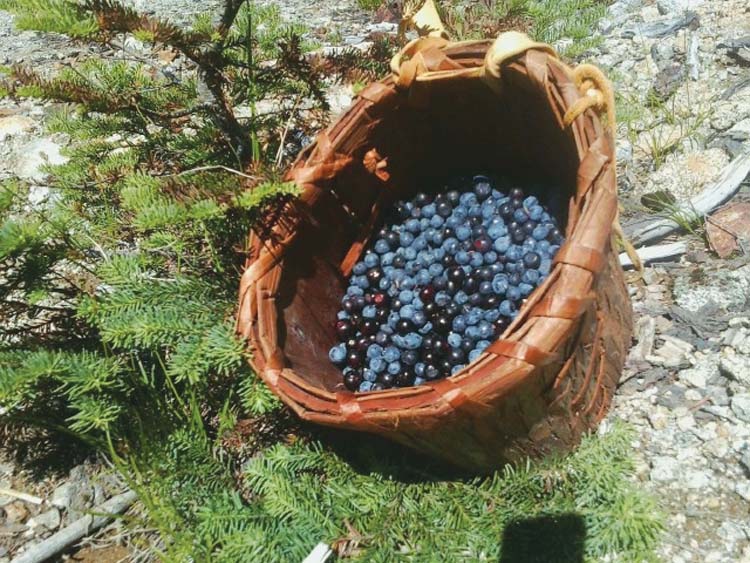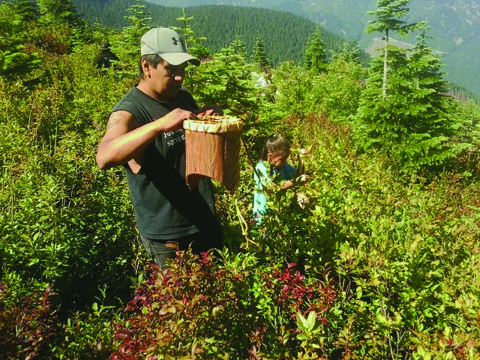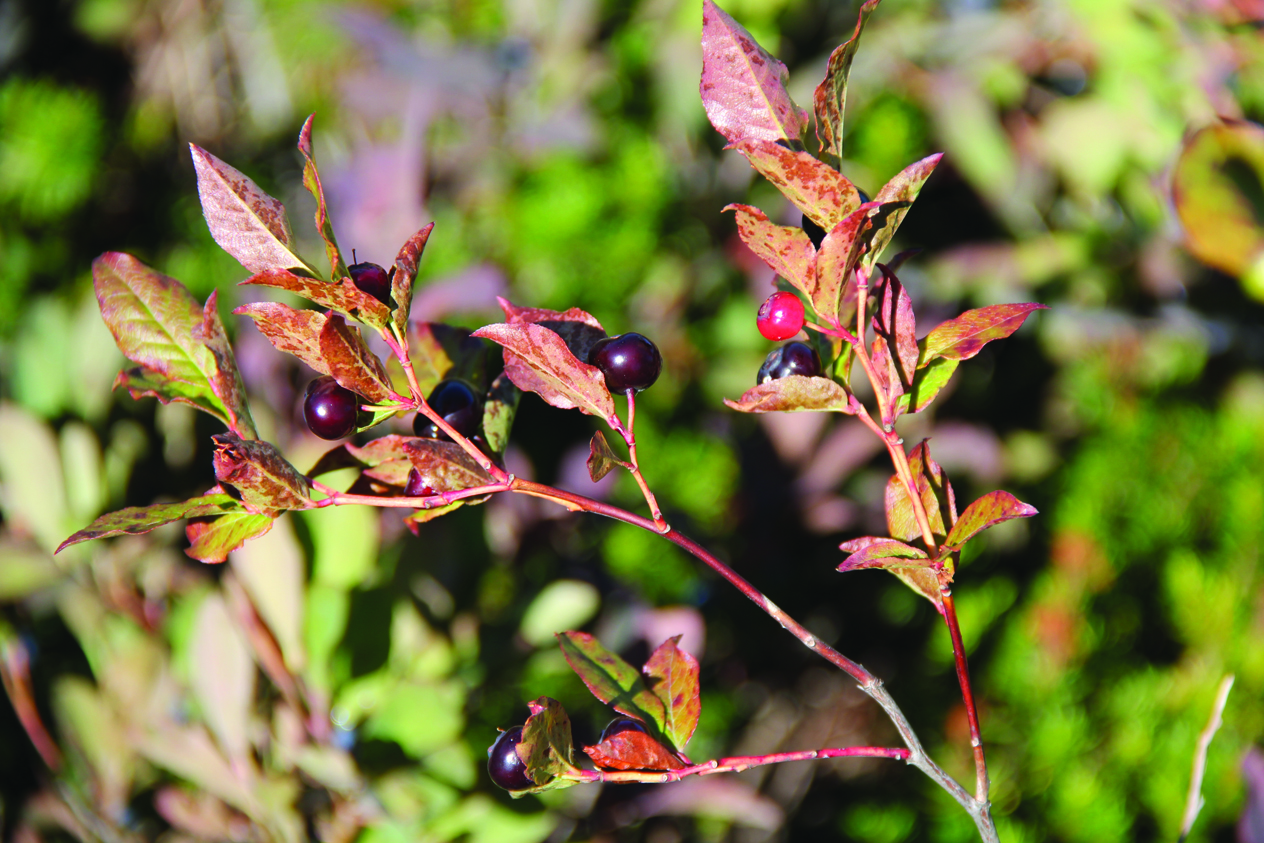
Photo/Ross Fenton
Co-stewardship areas yield bountiful harvests
By Andrew Gobin, Tulalip News, with photo contributions from Ross Fenton
Tulalip − The Tulalip Forestry Department took their summer youth workers huckleberry picking in Swәdx’ali on Harlan Ridge for the Hibulb Cultural Center on Wednesday, the 21st.
The berry patch is one of many co-stewardship areas throughout the Mt. Baker-Snoqualmie National Forest where tribes are collaborating with the Washington Forest Service to preserve and maintain natural flora. Along with gathering berries for the museum, the Tribes’ Forestry Department wants to make the tribal membership aware of Swәdx’ali, and sites like it, where our people can go and harvest traditional plants and foods.
Staining their hands purple and red, the day was also intended as a fun and meaningful way to bring the youths’ time with the department to an end.
“Every year, we look for ways to take the youth out of the office, away from the reservation, and show them what we do, while having a little fun,” said Jason Gobin, Tulalip Forestry Manager. “And the museum will get a nice surprise because they don’t know they’re getting berries today,” he added.

Photo/Andrew Gobin
Swәdx’ali, meaning the place of the mountain huckleberry, is on Harlan Ridge and is covered with berry bushes; the common huckleberry bush with the small red berries, the mountain blueberry bush, and the big leaf huckleberry bush that has the larger black berries. Swәdx’ali is so named because of cultural and biological significance of the area, as the big leaf huckleberry naturally grows in the mountains, above 3,000 feet.
This area is one example of how the Tulalip Tribes is working to reclaim traditional areas. The co-stewardship with the state stems directly from the Point Elliot Treaty, which secured claims to usual and accustomed places, and the privilege of “gathering roots and berries in all open and unclaimed land.”
Reiterating the need to bring awareness to the people, Gobin explained, “These places of co-stewardship are open to all of Tulalip, but there aren’t many who know how to access them, or that we even have these resources available to us.”
For those who would like to access these sites, contact Tulalip Natural Resources at 360-716-4640 or Tulalip Forestry at 360-716-4371.

Photo/Andrew Gobin
